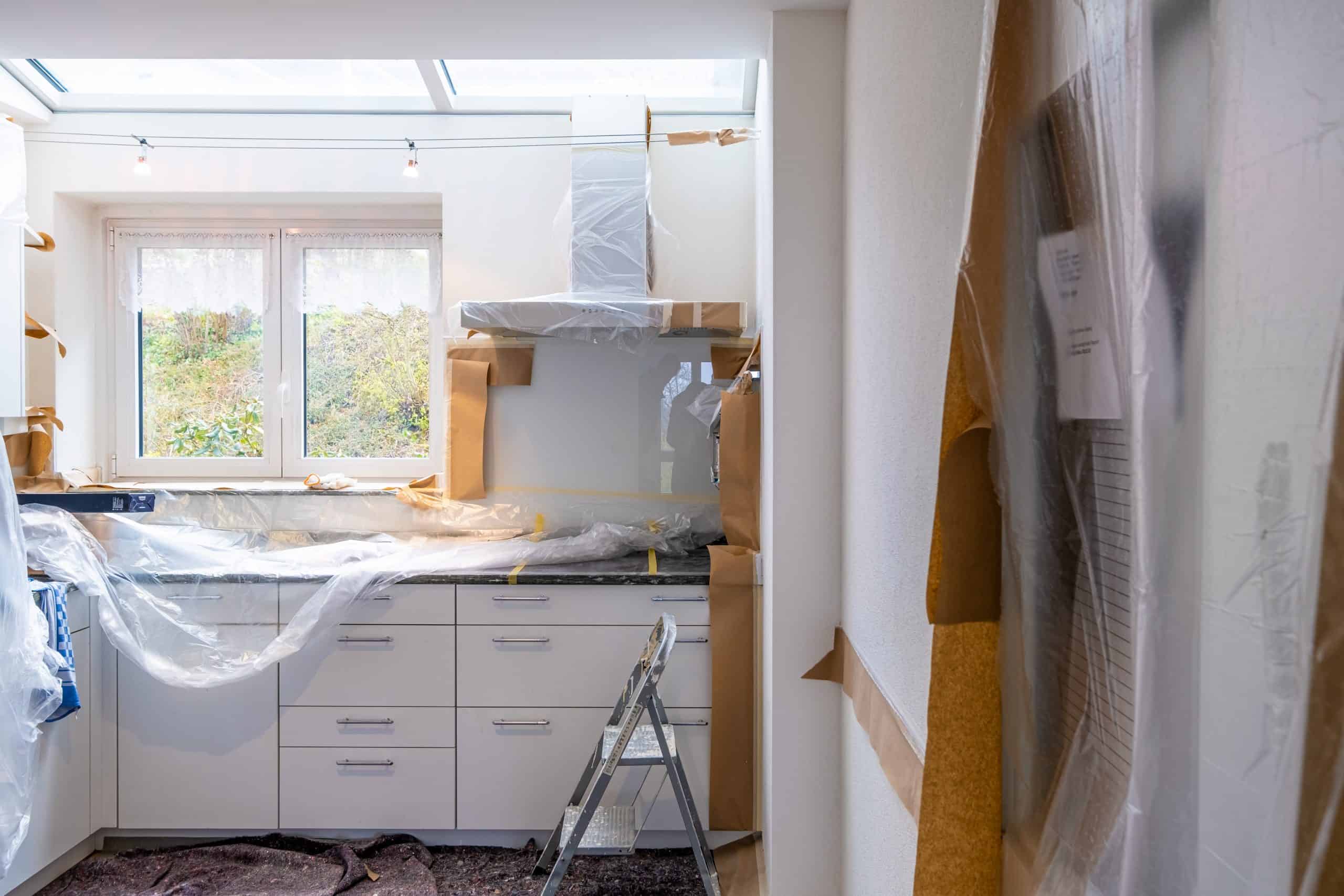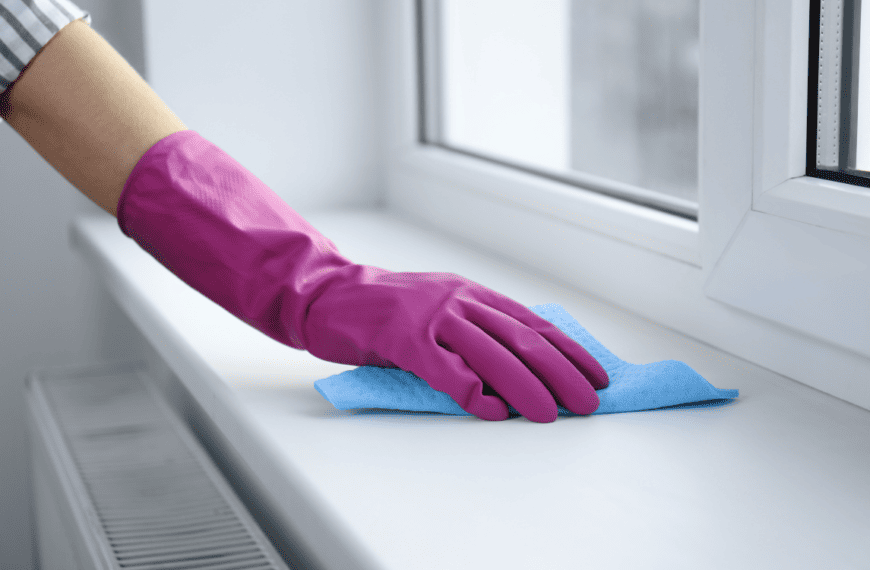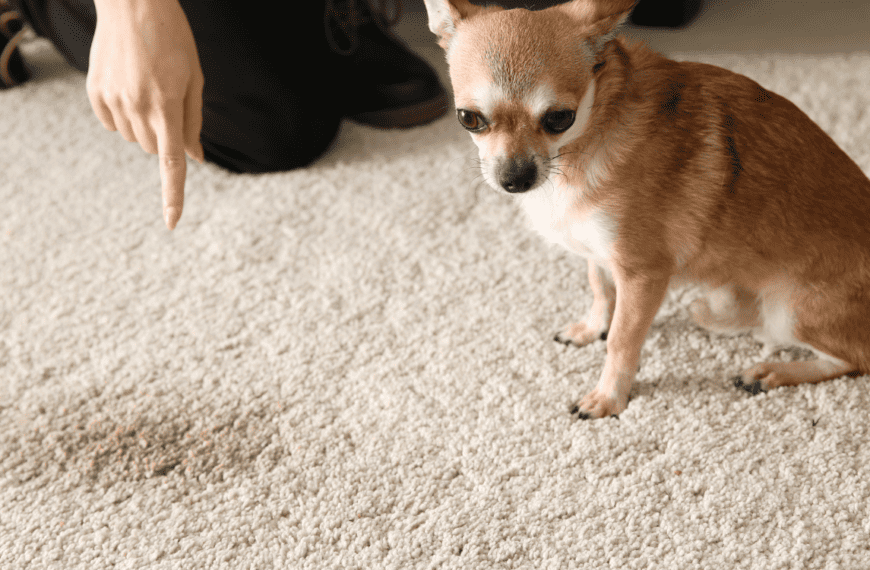Has this ever happened to you?
It’s the end of the day. Work was long, and the kids were overly-excited all day. Now, it’s time for a nice bath before bed. But what’s that in the corner of the tub? Something black and fuzzy? Oh no.
It’s mold.
Aside from the general gross factor of mold, these tiny fungi can cause damage to your home. In fact, some can even be dangerous to your health. Even with routine cleaning, though, mold and mildew seem to always return to specific spots in the home.
As it turns out, cleaning isn’t enough. Still, with a little bit of work, you can turn your house into a mold-resistant home. To do that, however, you must first understand what mold is, and what makes it keep coming back.
What is Mold?
In the simplest terms, mold is a fungus. Like other fungi, it prefers moisture and decaying matter. It also reproduces and spreads by releasing spores. These spores are tiny, and can exist on many surfaces.
Even in a clean home, mold spores will find a way to enter from the outdoors. For example, they will cling to clothes, or enter through open doors and windows. They can even come in through the HVAC system. Once spores have come inside, they will be greeted with the perfect environment.
Like us, mold thrives under certain conditions. Those include:
- Easy access to water (for instance, standing water or high humidity).
- A food source (mold exists on anything from cheese to drywall).
- Steady temperatures (typically between 60 and 80 degrees Fahrenheit).
Often, mold won’t grow out in the open. Colonies can thrive behind wallpaper and under tiles. Signs of decay include discoloration and deterioration of surfaces. If enough mold is present, you might notice a musty odor. Likewise, those sensitive to mold may show allergic symptoms, including coughing, skin irritations, and itchy eyes.
The Dangers of Mold
Many types of mold are hardy, and their spores are known to survive cleaning and low temperatures. Combined with the destructive potential and ability to cause health issues, it’s clear to see that mold is more than just an inconvenience.
Mold comes in three categories of hazards:
- Class A molds create toxins and cause infections.
- Class B molds trigger allergic reactions, especially over long exposure times.
- Class C molds have no known health risks.
Symptoms of mold allergies are similar to seasonal allergies. Thus, many people confuse mold allergies with seasonal pollen allergies, or even asthma. Additionally, mold will make those existing conditions worse.
Nearly 40% of all asthma attacks are triggered by mold exposure and other household allergens. As well, since mold can grow and spread in as little as 24 hours, it can become an issue overnight. Mold is also exceptionally dangerous around infants. According to the Mayo Clinic, infants living near mold are three times more likely to become asthmatic.
Aside from your health, mold will ruin your home. Large patches of mold will eat through and weaken drywall and wood. Mold growth can also lead to staining and degradation of wallpaper and carpets. In some cases, mold can cause issues with attics and wood flooring, if a problem has existed for a long time.
How to Prevent Mold
Mold exists everywhere. There is little chance of ensuring your home is free from every possible mold spore. However, by paying attention to the conditions and taking proactive actions, you can keep mold growth to a minimum.
Vigilance and Cleaning
The first step in preventing mold is to eliminate its growth factors. The best way to prevent mold is to keep humidity and moisture in check. Any spills should be immediately dried. To avoid condensation, leaky faucets and pipes (including HVAC units) should be cleaned, dried, sealed, or covered. Finally, make sure your home’s humidity never goes above 65%.
If you see any potential problem areas, like cracks in foundation walls or broken caulk along bathtubs, then address them immediately. Since mold can grow and spread in just a couple days, time is of the essence to avoid further damage.
If your house (or a room) is prone to high humidity, use dehumidifiers and fans to ensure airflow and moisture reduction. Keep windows closed on humid days, but feel free to open them on dry days to help reduce the indoor humidity.
Once all of that is addressed, grab your mop—it’s time to clean.
Start by cleaning your surfaces with soap and water. Pay extra attention to mold-prone areas, including the bathroom and sink area in the kitchen. You can also use specific mold and mildew cleaners if you have to clean an active patch. These are available from the store, but you can also make your own mold cleaners.
For a bleach option, mix 16 ounces of cold water with 2 ounces of bleach. A non-bleach option takes 2 ounces of white vinegar and 2 ounces of Borax with 16 ounces of warm water.
To use these, or any mold cleaner, follow these directions:
- Wear gloves and a mask to avoid potential irritation or spore inhalation.
- Spray the solution of choice on the affected areas.
- Wipe the spots down to remove the surface mold, and then spray again.
- Wait 20 minutes for the mixtures to work into the surface before wiping away again.
These steps may have to be done a few times, but wait a day to see if the previous cleaning has done the trick.
Mold-Resistant Materials
Mold damage can be intense, and at times, no amount of vinegar and Borax will fix the problem. In these situations, you might have to tear up some part of the home and start over. Fortunately, this allows you to use mold-resistant replacements, and avoid future mold events.
The most common mold-resistant materials include:
- Mold-resistant wood: Wood treated with anti-mold and anti-fungal chemicals, but guaranteed not to release any harmful fumes.
- Mold-resistant insulation: Fiberglass insulation is naturally mold resistant. Also, its composition encourages fast drying of moisture. Some insulation has further anti-fungal properties, as well.
- Mold-resistant drywall: Often seen in bathrooms and basements, mold-resistant drywall is typically moisture-resistant as well.
- Mold-resistant paint: These paints inhibit new mold growth, which is great for mold-prone areas. Just be sure there is no mold present before painting; otherwise, the mold will continue to grow.
- Mold-resistant caulk: Like paint, caulk is resistant to new mold growth. It will need to be applied to a clean, mold-free surface to have any effect.
- Mold-resistant sealant: This is an antimicrobial coating that can be applied to various surfaces. Usually used on the raw materials of a building, the chemicals reduce fungal growth and inhibit the collection of moisture.
The proper use of these materials still calls for a thorough cleaning beforehand and routine cleaning afterward. However, these materials can help you gain the upper hand against stubborn and returning mold issues.
Active Solutions
The spores of mold and other fungi are floating all around us. Short of going into space, we will have to live with the potential mold bloom. For people with illnesses or mold sensitivities, active steps should be taken to keep mold presence as minimized as possible.
Start by making sure the home’s HVAC system is clean and running correctly. Clean any mold present, so it isn’t blowing extra spores into the house. Use the best filters, especially those designed for allergy sufferers. Regularly cleaning and changing your HVAC filters can reduce up to 99% of airborne allergens in your home.
You should also increase your dusting and vacuuming schedule. Eliminating spores and sources of mold nourishment are the best ways to prevent mold growth in the first place. Make sure you dust first, and then vacuum. As well, use bags with special filters that keep mold and other allergens trapped inside.
As said before, keep the humidity in check throughout the house. It should be between 30% and 50%. Mold thrives at above 65% humidity, even in lower temperatures. Use dehumidifiers and fans to keep air dry and circulated. This will help avoid mold in carpets and in the other usual locations.
Pay special attention to traditional high-mold areas, such as bathrooms and basements. Always turn the exhaust fan on after a shower. And if you have a damp basement, it should have its own dehumidifier.
Finally, always be ready to address issues that pop up. For instance:
- Clean up spills and overflows as soon as they happen.
- Routinely clean the home, paying attention to corners and low areas where moisture collects.
- Have water damage or cracks repaired and cleaned as soon as possible.
- Keep the exterior clean as well. Empty gutters of debris to avoid mold, and watch for mold patches on the roof and exterior walls.
With a sound cleaning routine, you should catch any mold issue just as it appears. A prompt response is vital in keeping mold issues from returning in the future. Also, by applying active and passive mold prevention, your home should become fresher and healthier almost overnight.
Final Thoughts
Aside from being that gross patch growing in the corner of the basement, mold is dangerous. Though not all mold will cause issues, plenty of them do. Indeed, some can lead to dangerous infections. In short, mold is no laughing matter. Because it is everywhere, though, we have to fight against potential infestations proactively.
Keep a clean house and focus on mold-prone areas, such as bathrooms and kitchens. Clean up all moisture and eliminate high humidity. These should be the first major steps of any mold-prevention routine. Consider switching to mold-resistant materials if you find the issues returning repeatedly.
If you or a family member is sensitive to mold or has existing allergies, your mold prevention will be a near-daily task. Since mold can grow into a sizable colony in just a day, a prompt response is necessary. However, with the above tips and a couple of spray bottles of homemade mold cleaner, your home will soon be fresh and clean once more.









